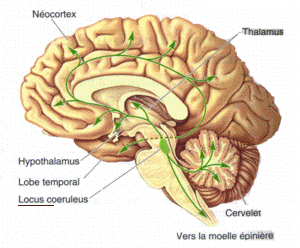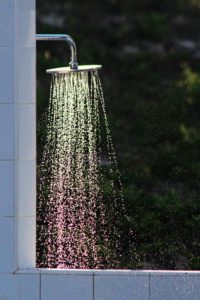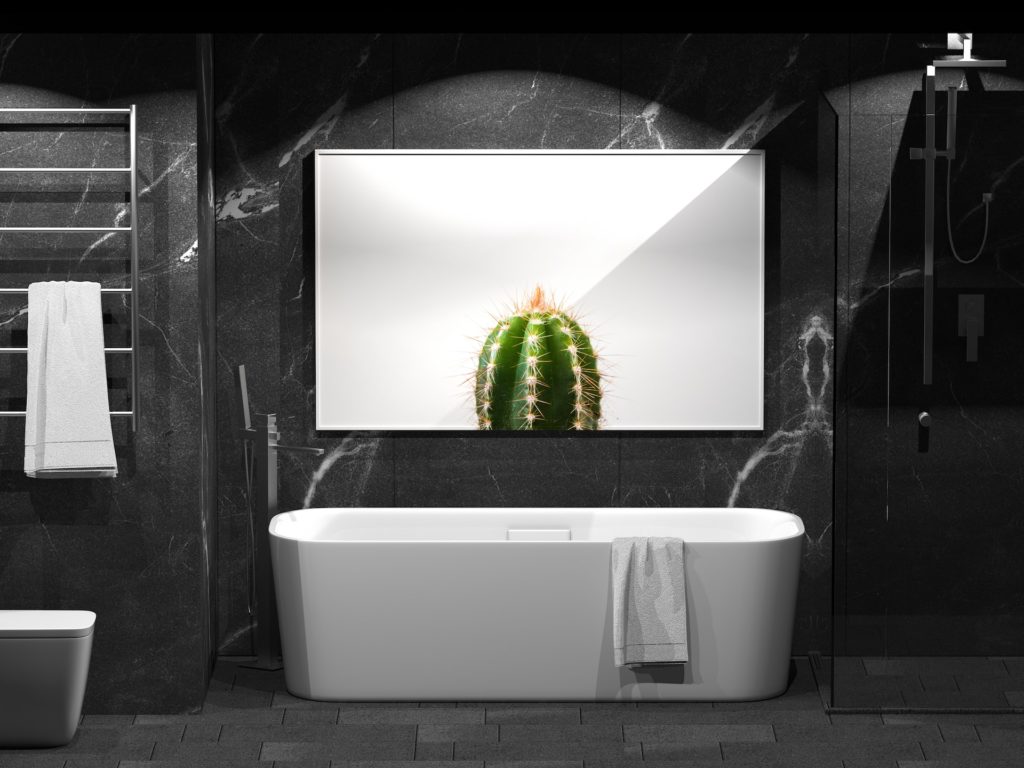Cold therapy & ice bathing are hormetic stressors. That means they are able to powerfully shift the equilibrium that exists in the body to trigger an adaptation. A well-known hormetic stressor is strength training: it invokes intentional damage that forces the body to adapt and become stronger. This effect is called hormesis. You can read more about this in detail in this article on the use of sauna.
Today we will look at its mirror, cold therapy. First, we’ll look at the benefits associated with this activity, as well as the things to watch out for. After that, we’ll go into the world of mechanistic physiology to understand what basic adaptations you’re triggering. But don’t worry, it’s going to be alright.
Based on the mechanisms, we’ll work through 3 protocols you can use to get into the benefits of cold adaptation: one for cold showers, Jack Kruse’s protocol, and the real deal, ice bathing.
Health Benefits of Cold Therapy and Ice Baths: The Pros & Cons!
Is Ice bathing and cold water immersion healthy?
Short answer: Fuck, yes! At least in most cases and with respectful1(read: not completely stupid) handling.
Long answer: Still, yes.
Cold is a powerful stressor that positively affects many bodily systems. Still, it must be approached with intention and respect, because cold also has downsides. Fortunately, these are rare and more reserved for extreme use. Things like hypothermia and afterdrop should remain foreign to people using cold showers and only become an issue when ice bathing or winter swimming. Additionally, we mammals are extremely well adapted to cold and the unpleasant stress ensures that you stay on the side of ‘too little’ rather than overdoing it right away.
What are the Health Benefits of Cold Therapy?
As mentioned earlier, cold therapy & ice baths offer many benefits and cause adaptations in the body. We will now take a look at the most important five. We will clarify why they occur, and more importantly, what benefits they bring you in everyday life.
Cold Adaptation
Probably the coolest effect is that you get used to the cold. No kidding, it works!
The guys who run around in shorts & T-shirts in the winter are not genetic freaks, but simply well-accustomed to cold weather. Their bodies produce plenty of heat themselves in a process called thermogenesis. A lot of energy goes to waste as heat. So you burn an additional ton of energy.
You can do that too. To do this, you need to put your body in the optimal starting position for thermogenesis. This topic is far too complex for this post, so just a list of the main factors:
- Highly saturated body fat: unsaturated body fat inhibits many transcription factors2such as PPAR-gamma, SCD1, and the uncoupling proteins that ultimately open the pores of the mitochondrial matrix and thus uncouple the respiratory chain from ATP production – most notably UCP1 & UCP3.
- Leptin-Melanocortin Pathway: the main driver of uncoupling and therefore initiator of thermogenesis. Leptin is highly circadian therefore you need a strong rhythm to burn off fat efficiently.
- Healthy Mitochondria: the place where the magic happens. Dysfunctional ones or high heteroplasmy rates will hinder the process.
Optimizing Semiconduction
This is a huge one. Imagine your body as a huge semiconductor – by definition, those substances can conduct electricity based on their temperature. Colder environments help the body’s systems to conduct electrons more efficiently.
A better ability to channel energy and quantum effects more efficiently changes everything. Therefore your body can create internal light more easily and therefore gain a lot more energy from the sun, grounding and mitochondrial activity.
Metabolic Health
Cold is very beneficial for metabolism because it increases mitochondrial density and stimulates the formation of brown adipose tissue – more on that later. This has powerful effects on how your body gains energy:
- It can better oxidize fats for energy. This in turn has effects on blood levels of cholesterol, glucose & fats.
Especially in connection with a ketogenic diet, these effects are worth emphasizing. It puts your body in the optimal position to burn fatty acids efficiently. I have also personally had great experiences with it.
Solid Immune Function
Cold has effects on both the innate & acquired immune system. The levels of many immune cells are relatively high in cold-adapted individuals. Namely those were lymphocytes, T-helper cells, and natural killer cells3Immunology is immensely complex: ‘Immune changes in humans during cold exposure: effects of prior heating and exercise’ + ‘Adaptation related to cytokines in man: effects of regular swimming in ice-cold water‘
What this means in practical terms is an adaptation to the stress that the cold represents. Your body creates more immune cells and matches it better. So it’s far more effective at fighting off invaders efficiently and, interestingly, not attacking itself mistakenly. More about this in the next point on inflammation!
Cold Therapy benefits Inflammation
The immune system is a double-edged sword. Extremely strong & aggressive, it defends the body against all kinds of harmful substances almost perfectly. You first see how important it is in the limitations that come with severe immune deficiency.
On the other hand it is also a constant risk, because the immune system can attack the body. This is where fine-tuning is immensely important. And this is also the point where things become enormously complex because so many factors exist.
Chronic Inflammation
Chronic inflammation is a huge problem today and one of the main drivers behind almost all diseases, such as Alzheimer’s, obesity, autoimmune diseases, and all cardiovascular diseases.
Cold therapy has a very positive effect on chronic processes, especially this has been studied in the context of autoimmune joint diseases such as rheumatoid arthritis. Ice bathing had strong effects on various immune substances such as the inflammation-driving interleukin-6, various prostaglandins and TNF-alpha.4Effects of Whole-Body Cryotherapy in Comparison with Other Physical Modalities Used with Kinesitherapy in Rheumatoid Arthritis‘
All these guys are signaling molecules of the body that upregulate inflammation. Also, cold exposure has effects on anti-inflammatory signaling molecules like IL-10.5‘Update on the Pathomechanism, Diagnosis, and Treatment Options for Rheumatoid Arthritis‘
Acute Inflammation
Strength and endurance training are stressors. The damage done elicits an acute inflammatory response. Signaling molecules like IL-2, IL-1-beta, IL-8 go up.
This is intentional and in this context ‘good’. It is the signal for immune cells to go to work and up-regulates various genes that deal with repair and expansion of the muscular infrastructure.
Cold therapy is very potent in down-regulating this acute inflammatory response by attenuating the release of interleukins.6‘Time-Course of Changes in Inflammatory Response after Whole-Body Cryotherapy Multi Exposures following Severe Exercise‘ + ‘Effects of whole-body cryotherapy on serum mediators of inflammation and serum muscle enzymes in athletes‘ This is again a double-edged sword, because sometimes acute inflammation is intentional: after strength training for muscle growth and strength gains. Sometimes, however, it is not, such as after technique training or in competition preparation for endurance athletes. Let’s take a closer look at the ‘disadvantages’.
Ice baths and Brain Health
Besides metabolic effects, cold therapy has very strong effects on brain health. In particular, the formation of synapses, as well as mood and associated diseases such as depression and neurodegenerative diseases, are positively affected. Also, ice bathing shows to be useful in preventing winter depression.
Lighten mood & prevent winter depression
In terms of mood, few things have as euphoric an effect as an ice bath. This is due to the enormous output of the neuromodulator norepinephrine. More on this later in the scientific section. It influences the condition, the energy perception, but also the concentration, still several hours after the cold exposure. That’s why neuroscientist Andrew Huberman recommends icebaths before cognitive work.
More Synapses within the brain
In hibernating animals, cold shock proteins cause synapses to cross-link. Old connections are eliminated and new ones are linked. This process is called neuroplasticity. The cold shock protein RBM3 and its effects on neurodegenerative diseases were investigated in this context.7‘Cold stress protein RBM3 responds to temperature change in an ultra-sensitive manner in young neurons
Are Cold Therapy & Ice baths harmful? The possible Downsides!
Bad Timing & Misuse
You remember the powerful effect of cold exposure on inflammatory signaling molecules – all those IL’s – don’t you?
After strength training, however, these are intentional, as is the inflammation. Without this, there is no muscle growth and no strength adaptation. If you go into an ice bath after strength training, you reduce the effect – not completely, but measurably. Therefore, avoid cold therapy and ice baths 4-6 hours after strength training.
However, after technical training, in competition preparation, or loose endurance training, avoiding inflammation is often a desired and positive thing. Here, subsequent cold therapy can be a powerful tool to improve recovery. As you can see, it depends a lot on the context, but it’s no magic either. Be clear about your goals, then you know when you can go cold.
The uncomfortable Afterdrop

If you go ice bathing, especially for longer periods beyond 5-10 minutes, you may experience the phenomenon of ‘afterdrop’. This is when your body temperature continues to drop even after you are out of the ice bath. This is not yet a true hypothermia. Still, it feels extremely ass-kicking and you freeze miserably.
Therefore, wrap up warm directly in thick clothing, drink something warmer if you like, get in the car and turn on the heater – and avoid warm showers. If you can get used to cold, push the possibility of the afterdrop also further back. More on this topic in this excellent article by the Outdoor Swimming Society.
True Hypthermia
Hypothermia can occur anywhere where the water temperature is colder than your body. So also theoretically in 25° cold water. Hypothermia is defined as the case of your body temperature below 35°C, whereby it only becomes more serious from ~32°C core body temperature.
Hypothermia is not so easy to recognize. Especially by yourself it becomes more and more difficult, because hypothermia makes you careless about your own condition. Therefore, always go into the cool water in a group and make sure your buddies know about afterdrop & true hypothermia. You can read a lot more about this complex topic in this other article by the Ourdoor Swimming Society.
It is worth mentioning that for most it will not be a problem until you start ice bathing outside – especially then in winter and for a longer duration. Nevertheless, it is important to have read about it.
The Science of Cold Therapy
Release of Norepinephrin

Norepinephrine is a neurotransmitter found in the brain largely in the locus caeruleus and can be pumped into the bloodstream by the adrenal glands. Norepinephrine is exactly the same as norepinephrine, however, taxonomy has it being called norepinephrine in the brain, and norepinephrine in the systemic circulation.
It is a ‘stress substance’ as it upregulates various bodily functions related to increased attention and performance:
- Constriction of blood vessels and increase of heart rate
- Activation of thermogenesis
- Increase of immune function
- Improvement of energy production, especially fat burning
- Increase of attention, concentration and mood
These effects are fired up by activating a whole host of receptors and transcription factors. Norepinephrine, interestingly, is also the substance that makes ice bathing feel good, almost intoxicating – at least once you’re inside. Usually it’s dopamine that causes this effect, but here it’s norepi directly.
Stimulation of Thermogenesis
Thermogenesis is our body’s ability to generate heat to maintain body temperature. Without our 37°C body temperature, the function of various critical enzymes & thus organ systems breaks down. The body can generate heat in two ways:
- Exercise, such as occurs when muscles tremble.
- mitochondrial uncoupling, as occurs in brown adipose tissue
Shivering is just shivering. What is interesting for us in the context of cold therapy is the second point: uncoupling.
Mitochondrial Uncoupling
The respiratory chain generates ATP. However, it has a second trick up its sleeve and can generate heat instead of ATP. The details are enormously complex, but the theory is quite simple:
- Take a look at the picture of the respiratory chain. Ignore EVERYTHING except ‘ATP synthase’. This funnel-shaped part is the 5th complex, the place where energy is generated.
- Instead of generating energy in the form of ATP (chasing protons through ATP synthase or complex V, as shown in the arrow), pores are opened in the inner membrane of the mitochondria. These pores are not shown.
- The energy of the protons is released freely as heat.
Uncoupling requires Leptin (or Norepi)
For this uncoupling it needs healthy mitochondria – see the point ‘getting used to cold’. Uncoupling takes place through the uncoupling proteins (UCP = Uncoupling Protein). In humans there are UCP 1-5, UCP1 being the most important for uncoupling and therefore having the special title ‘thermogenin‘. It is activated by, among others, our buddy norepinephrine. But even more important is leptin. And here starts the problem of why everyone is freezing these days – the majority is leptin resistant. But more about that in another post.
Brown Fat = Full of Mitochondria
Also it needs many mitochondria for the production of heat: predominantly the concentration is high in brown fat tissue. It is brown under the microscope because of all the mitochondria!
Brown adipose tissue (BAT = Brown Adipose Tissue) differs from normal, white fat, in that it does not perform a storage function. In fact, BAT is the body’s heating system. It is also part of the reason why babies are so flabby. They have a lot of it.
Cold therapy starts exactly here and improves the activation of the existing brown fat, and additionally causes the transformation of beige fat (an intermediate stage), into brown fat.
New Mitochondria come into existence
Another ‘attack vector’ of cold therapy is the formation of new mitochondria in many tissues. It is exactly the same effect that endurance training brings about.
The gatekeeper of so-called mitochondrial biogenesis is a transcription factor with a lovely name: Peroxisome Proliferator-activated Receptor Gamma Coactivator 1-alpha. Or, among friends, simply PGC-1-alpha. A transcription factor is something that activates or inactivates genes. In our case, PGC-1-alpha fires up the metabolism and:
- improves fat & glucose burning
- forms new mitochondria
- increases thermogenesis
- brings mammals (yes, also humans) out of hibernation metabolism
The Role of Cold Shock Proteins
Cold shock proteins are a family of proteins that are secreted in response to a cold stimulus.8‘Cold shock proteins: from cellular mechanisms to pathophysiology and disease‘
Similar to heat shock proteins, the role of cold shock proteins is to maintain cellular function despite changing temperatures. Indeed, the cold does:
- Membranes less flexible
- destabilizes the structure of DNA & proteins
- makes the production of proteins more difficult, because the ribosomes can no longer optimally read out the DNA
Cold shock proteins are one way the body combats and stops these effects. It is important to note that many stressors can activate cold shock proteins, not just the cold itself. Too little oxygen, or even oxidative DNA damage, activates these dudes.9‘The role of cold-inducible RNA binding protein in cell stress response’
What are the best Protocols for Cold Therapy & Homemade Ice Baths?
The following protocols are what naturally follows from the mechanisms. All 3 are made for everyone privately, without large equipment, to perform at home. Sure, there are off still the professional cryo-chambers and Co, nevertheless, I consider them little necessary. A shower, a bathtub and at most an icy lake in the neighborhood are all you need.
Getting Started: Cold Showers

All beginnings are difficult, so it is also with cold exposure. What helped me in the beginning were alternating showers at the end of the shower:
- Initially 10s medium cold with 30s warm, for 2-3 sets.
- You can increase by the duration: e.g. 60s medium cold with 15s warm.
- Or by the cold: e.g. 10s very cold with 30s warm.
- The goal: progression to persuade yourself to do an ‘ice bath’.
It is a great tool for gaining experience and mental training. However, cold showers will not provide the necessary stimulus for thermogenic effects. Therefore, think of it as mental training in preparation for an ice bath. A good goal is alternating showers on the coldest setting for 60s cold, 30s warm, for 3-5 sets. Or completely cold for 3 minutes at the end.
These days I’m not a fan of cold showers, but shower normally and schedule my ice baths separately. That’s for everyone to figure out.
Jack Kruse’s Protocol
Jack Kruse is a pioneer when it comes to cold therapy and cold thermogenesis. His approach is quite extreme, but deeply grounded. Go here for his original post series, with all the in-depth details. Also, the protocol can be found in his kickass book ‘Epi-Paleo Rx’*.
The idea is to optimize your omega 6/3 balance while adapting to the cold. So combining diet (high in saturated & omega 3 fatty acids) with cold therapy for optimal fat loss & health.
- Put on a compression shirt. Lie in the tub and place a block of ice or a bag of cubed ice (about 5kg) on your chest. Start with 10min, build up to 60min. Avoid cold urticaria and white skin as it is a sign of poor fatty acid ratios. Skin should remain red at all times. Numbness is to be expected.
- After: Ice bathing. Ice cold water first. The goal here is 20-60min. Gloves, cap and socks help at first. Later without these helpers and with additional ice.
This protocol is not for the faint of heart. A 20min ice bath is already a success, not to mention 60min. To work there definitely needs month of work and a respectful approach.
The Gold Standard: Homemade Ice Bath

This protocol is my protocol and gold standard. It is far less extreme than Kruse’s approach and should be feasible for any basic healthy person.
- The goal is a homemade ice bath for around 20 total minutes per session, 3x per week.
- Ice bath here does not mean ice cold. Start easy, with 20°C water for 5min.
- Work your way up from here. Either several sets of 5 min, or extend the time to e.g. 8min.
- Another progression step is to reduce the temperature to 17.5°C.
All you need is a thermometer, just like you would use for a roast in the oven. The approach is the same as for strength training: 1.25kg more per week, or one more repetition. Progression. Over the weeks and months you will naturally get to the lowest temperature of your bathtub and times around 20min. After that, it is a good idea to add external ice, or to go outside into nature. You should start in autumn, when the water is still relatively warm (~15-20°C) and not only in the deep winter with water temperatures around ~4-7°C.
To maximize the effect, be sure to eat something before ice bathing – a high-protein, strictly ketogenic meal. No carbohydrates at all. I would avoid fasting because of the cortisol spikes, but by all means, experiment around with it. Some celebrate it.
Ice bathing: start mild in the bathtub (~15-20°C). Short times, beginning, or even several sets. Goal: get colder and build to 20min in one set. After that: out from fall or external ice.
Fußnoten & Quellen
- 1(read: not completely stupid)
- 2such as PPAR-gamma, SCD1, and the uncoupling proteins that ultimately open the pores of the mitochondrial matrix and thus uncouple the respiratory chain from ATP production – most notably UCP1 & UCP3.
- 3
- 4
- 5
- 6
- 7
- 8
- 9